With only 600 metres in length, Paseo de Recoletos is one of the most emblematic avenues of Madrid. When walking up and down the half a kilometre length of this mythical boulevard that connects Plaza de Cibeles and Plaza de Colón, you are really taking one of the most pleasant walks in the centre of Madrid. So much so that it is nearly impossible to imagine a sunny afternoon in the capital without seeing people strolling along Paseo de Recoletos, because this traditional avenue is one of the favourite ones of the Madrileños in which to enjoy their leisure time.
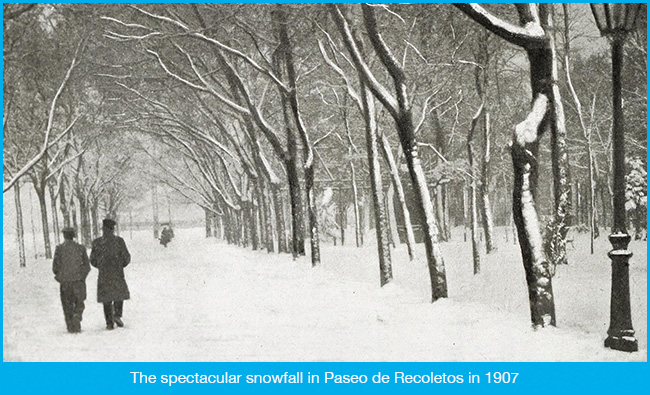
If we look back at its origins we have to travel to the XVII century. In those days, Paseo de Recoletos was lined by trees and surrounded with crop fields and a stream that crossed from side to side. At that time there were numerous convents near the boulevard. It was not until a century after, in the reign of Carlos III, that it was decided to change the place in order to turn it into a meeting space for the Madrileños.
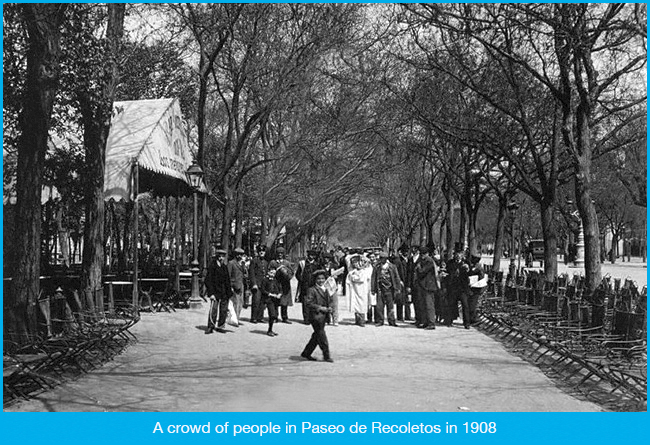
Since then it has always been a reference point in the capital because the people of Madrid have continued to stroll along it throughout the centuries. Today, we will take a trip down memory lane to our section A Walk in the Past and we will remove the dust from old images that will allow us to know what our city was like years ago. Do you want to join us and travel to the past of Paseo de Recoletos?
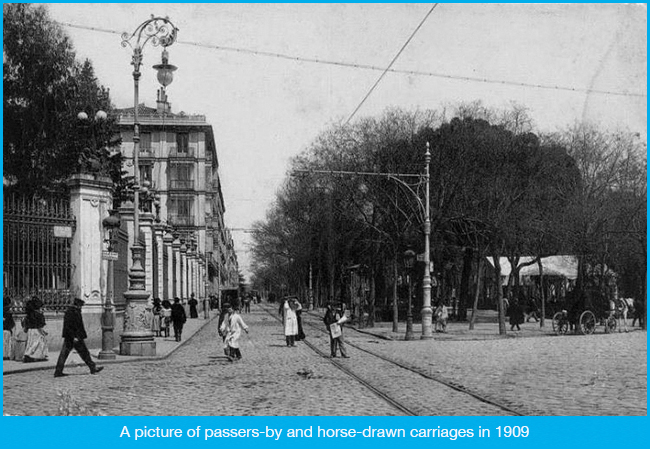
A DISTINGUISHED AVENUE
Paseo de Recoletos is thus called because in the XVI century a convent of Augustinian Recollect friars was located in that place. Later, the Biblioteca Nacional was built there, as well as the Museo Arqueológico, two buildings about which we wrote in this blog. As we have already said, it was not until the XVIII century that Paseo de Recoletos had the necessary drive to become one of the most outstanding avenues of Madrid.
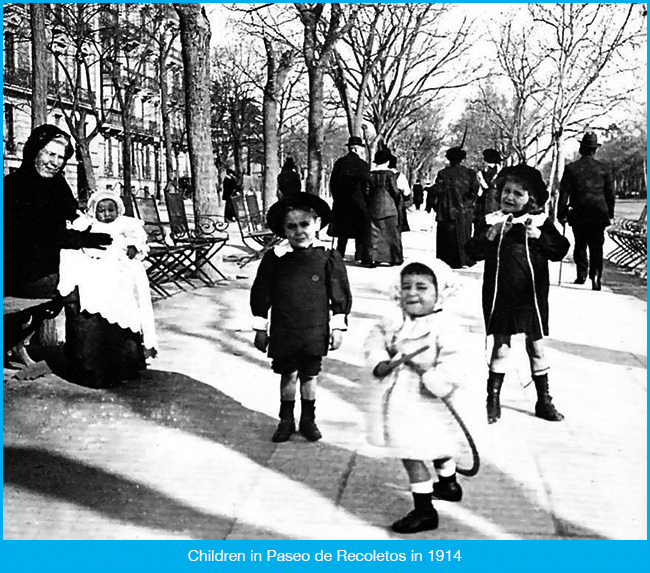
It was then that it was given a residential touch with the construction of gardens, statues and fountains all of which made this boulevard one of the most spectacular ones of the capital. At the end of the XIX century, it was often frequented by Madrid´s aristocracy; so much so that many aristocrats decided to build their small palaces there. Later on, in the 30´s, the avenue had already become a place full of noisy traffic, as we can see in the pictures of those days.
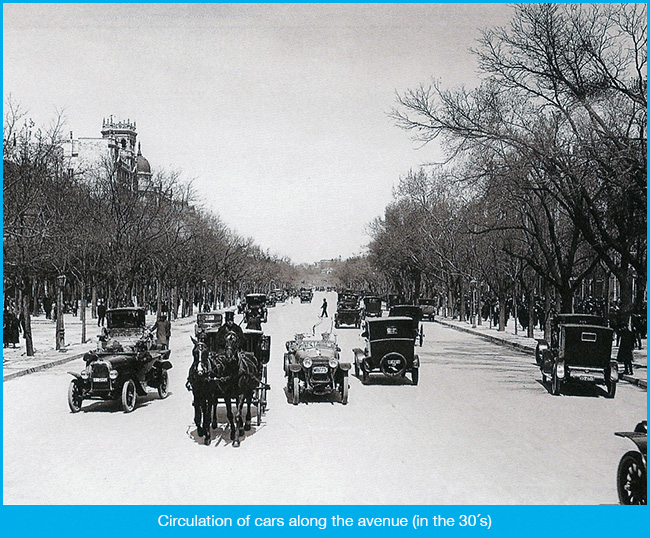
It is interesting to note how it also became a chosen place to go for a walk, something that has become permanent over time. Every Saturday and especially every Sunday, hundreds of Madrileños, dressed in their best clothes, used to go to Paseo de Recoletos to enjoy a long walk.
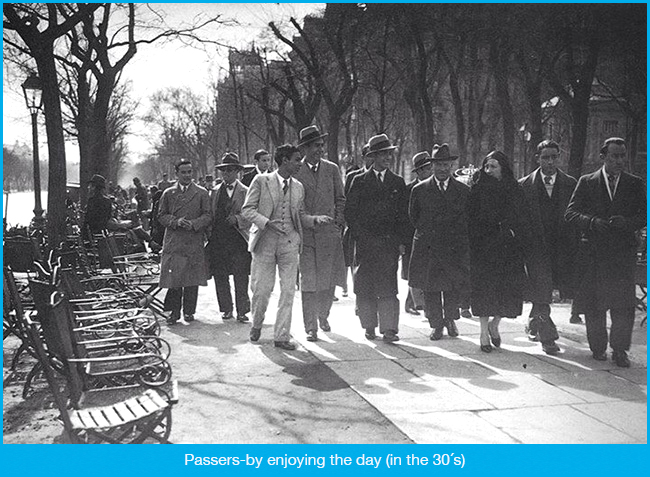
A BOULEVARD LINKED TO THE WORLD OF CULTURE
Paseo de Recoletos will always be linked to the world of culture, especially literature. In 1933, the first Book Fair took place there and it was not until 1967 that its location was changed to Parque del Retiro.
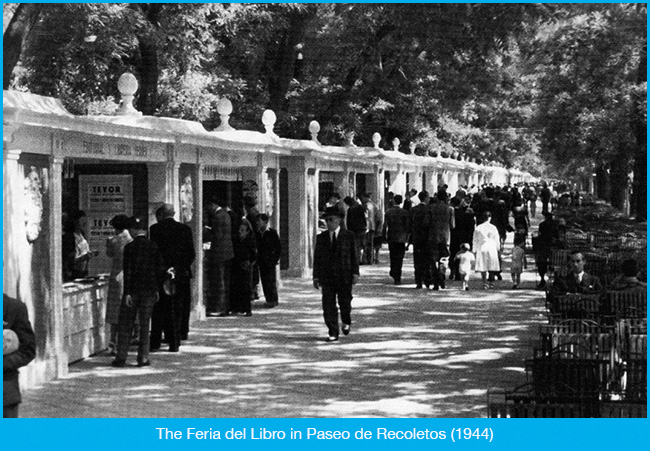
Prominent writers and intellectuals of Spanish society chose, throughout the years, the magnificent café terraces located along Paseo de Recoletos to have their passionate cultural gatherings. Café Teide, now disappeared, was located in 27, Paseo de Recoletos being in those days the most popular place for these gatherings. Luckily, the terrace of Café Gijón still exists since 1888, and it continues to be frequented by literary and cultural figures. There is a mythical photograph of Valle-Inclán strolling along Paseo de Recoletos, and we can imagine how, very probably after his walk, he would have stopped at Café Gijón to make himself heard, with his customary emphasis, by the clientele.
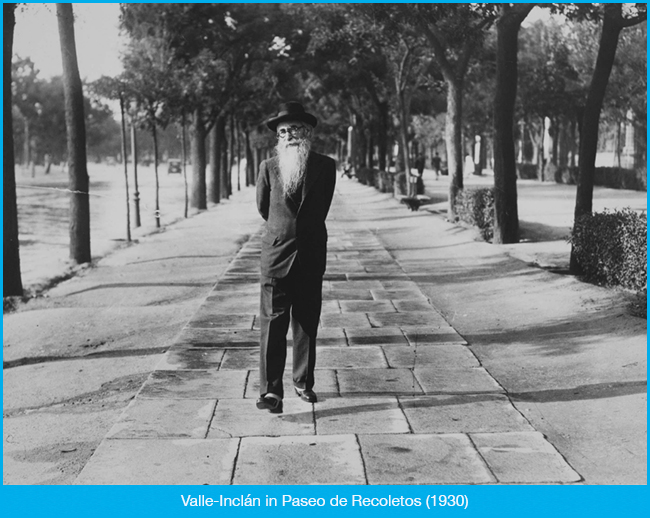
Since 1977, the Feria del Libro Antiguo y de Ocasión takes place here. In this avenue, we can also enjoy the Feria de Artesanía and Día Internacional del Trabajo.
DID YOU KNOW THAT…?
Paseo de Recoletos has had up to five different names. Before its final name, it was known as Prado de Recoletos, Prado Nuevo, Paseo de Copacabana and Paseo de Calvo Sotelo. It was not until 1981 that it was given its current name.
Valle-Inclán picture: Alfonso Sánchez Portela



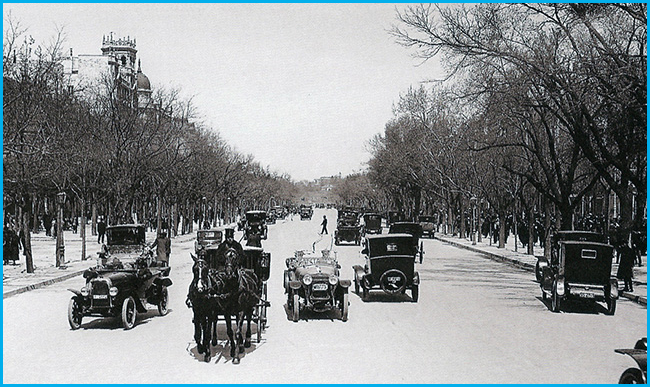
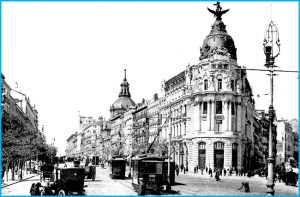
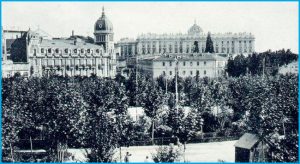
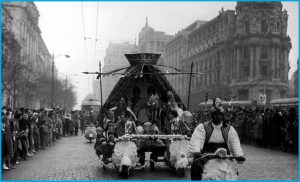
 Spanish
Spanish English
English